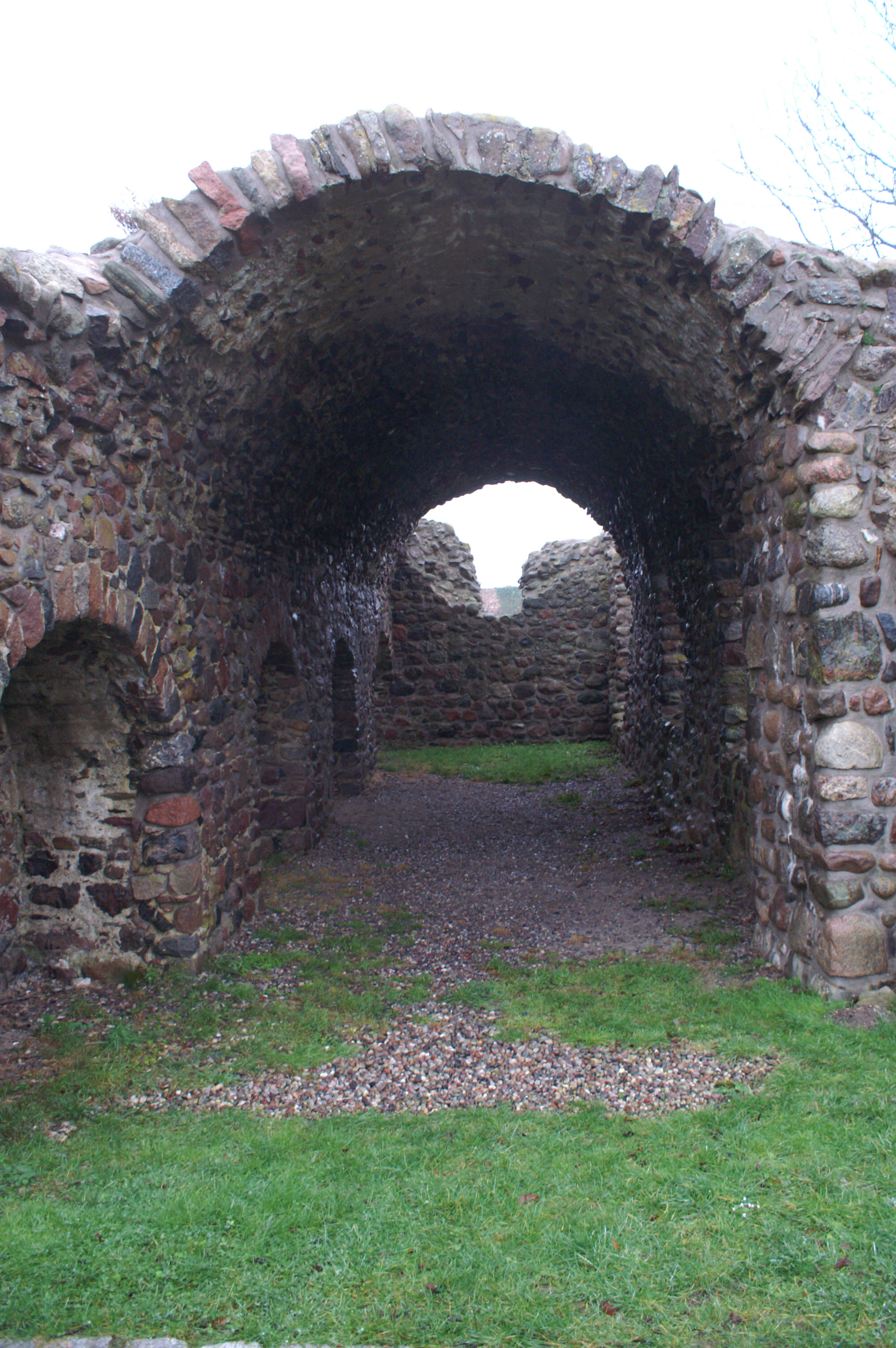Stolpe Abbey on:
[Wikipedia]
[Google]
[Amazon]


 Stolpe Abbey (german: Kloster Stolpe; founded 1153, dissolved 1534) was the first
Stolpe Abbey (german: Kloster Stolpe; founded 1153, dissolved 1534) was the first


monastery
A monastery is a building or complex of buildings comprising the domestic quarters and workplaces of monastics, monks or nuns, whether living in communities or alone ( hermits). A monastery generally includes a place reserved for prayer whic ...
in Pomerania
Pomerania ( pl, Pomorze; german: Pommern; Kashubian: ''Pòmòrskô''; sv, Pommern) is a historical region on the southern shore of the Baltic Sea in Central Europe, split between Poland and Germany. The western part of Pomerania belongs to t ...
. It was located on the southern bank of the Peene
The Peene () is a river in Germany.
Geography
The Westpeene, with the Ostpeene as its longer tributary, and the Kleine Peene/Teterower Peene (with a ''Peene '' without specification (or ''Nordpeene'') as its smaller and shorter affluent) flo ...
River between Gützkow
Gützkow () is a town in the District of Vorpommern-Greifswald in Mecklenburg-Vorpommern, Germany. It is situated some 15 km south of Greifswald
Greifswald (), officially the University and Hanseatic City of Greifswald (german: Universi ...
and Anklam
Anklam [], formerly known as Tanglim and Wendenburg, is a town in the Western Pomerania region of Mecklenburg-Vorpommern, Germany. It is situated on the banks of the Peene river, just 8 km from its mouth in the ''Kleines Haff'', the wester ...
near the village of Stolpe an der Peene.
Ratibor I, Duke of Pomerania, founded the abbey on 3 May 1153 in memory of his brother Wartislaw I. Wartislaw, who had subdued the area and converted its people to Christianity in the late 1120s, was killed near the site of the future monastery; according to legend he was murdered by a Liutician pagan.Jodocus Donatus Hubertus Temme, ''Die Volkssagen von Pommern und Rügen Volkskundliche Quellen'', 1976, p.107, ,
The abbey was settled by Benedictine
, image = Medalla San Benito.PNG
, caption = Design on the obverse side of the Saint Benedict Medal
, abbreviation = OSB
, formation =
, motto = (English: 'Pray and Work')
, found ...
monks from Berge Abbey near Magdeburg
Magdeburg (; nds, label= Low Saxon, Meideborg ) is the capital and second-largest city of the German state Saxony-Anhalt. The city is situated at the Elbe river.
Otto I, the first Holy Roman Emperor and founder of the Archdiocese of Mag ...
. The Pomeranian dukes and the Counts of Gützkow granted the new foundation extensive lands in the vicinity. In 1164, a meeting between the Duke of Saxony, Henry the Lion
Henry the Lion (german: Heinrich der Löwe; 1129/1131 – 6 August 1195) was a member of the Welf dynasty who ruled as the duke of Saxony and Bavaria from 1142 and 1156, respectively, until 1180.
Henry was one of the most powerful German pr ...
, and King Valdemar I of Denmark
Valdemar I (14 January 1131 – 12 May 1182), also known as Valdemar the Great ( da, Valdemar den Store), was King of Denmark from 1154 until his death in 1182. The reign of King Valdemar I saw the rise of Denmark, which reached its medieval zen ...
was held here.
In 1304, the abbey became part of the Cistercian Order
The Cistercians, () officially the Order of Cistercians ( la, (Sacer) Ordo Cisterciensis, abbreviated as OCist or SOCist), are a Catholic religious order of monks and nuns that branched off from the Benedictines and follow the Rule of Sain ...
, and was made a daughter house of Pforta Abbey
The Pforta monastery is a former Cistercian monastery located near Naumburg in Saxony-Anhalt, Germany. It was established in the 1130s and prospered in the Middle Ages. In the course of the Reformation the monastery was disbanded in 1540. Today th ...
. In 1305, Kärkna Abbey (also known as Falkenau Abbey) and in 1319 Padise Abbey
Padise Abbey ( et, Padise klooster) was a former Cistercian monastery in Padise in Harju County, Estonia, settled in 1310 by the dispossessed monks of Dünamünde Abbey in Latvia. It was converted into a fortress after its dissolution in 1559 ...
, both in Estonia
Estonia, formally the Republic of Estonia, is a country by the Baltic Sea in Northern Europe. It is bordered to the north by the Gulf of Finland across from Finland, to the west by the sea across from Sweden, to the south by Latvia, and t ...
, were put under the authority of Stolpe.
In 1534, Stolpe Abbey was dissolved in the course of the Protestant Reformation
The Reformation (alternatively named the Protestant Reformation or the European Reformation) was a major movement within Western Christianity in 16th-century Europe that posed a religious and political challenge to the Catholic Church and in ...
. The Thirty Years' War
The Thirty Years' War was one of the longest and most destructive conflicts in European history, lasting from 1618 to 1648. Fought primarily in Central Europe, an estimated 4.5 to 8 million soldiers and civilians died as a result of battl ...
made a battleground of Stolpe and left the abbey buildings in ruins.
References
List of Christian religious houses in Mecklenburg-Vorpommern
This is a list of Christian religious houses in Mecklenburg-Vorpommern in Germany, including Rügen, extant and non-extant, and including houses of both men and women. Almost all religious houses were suppressed during the Reformation in the 1 ...
{{Coord, 53, 52, 23.71, N, 13, 33, 41.19, E, type:landmark_scale:0_region:DE-MV_source:dewiki, display=title
1153 establishments in Europe
Christian monasteries established in the 12th century
1534 disestablishments
Benedictine monasteries in Germany
Cistercian monasteries in Germany
Monasteries in Mecklenburg-Western Pomerania
History of Pomerania
History of Mecklenburg-Western Pomerania